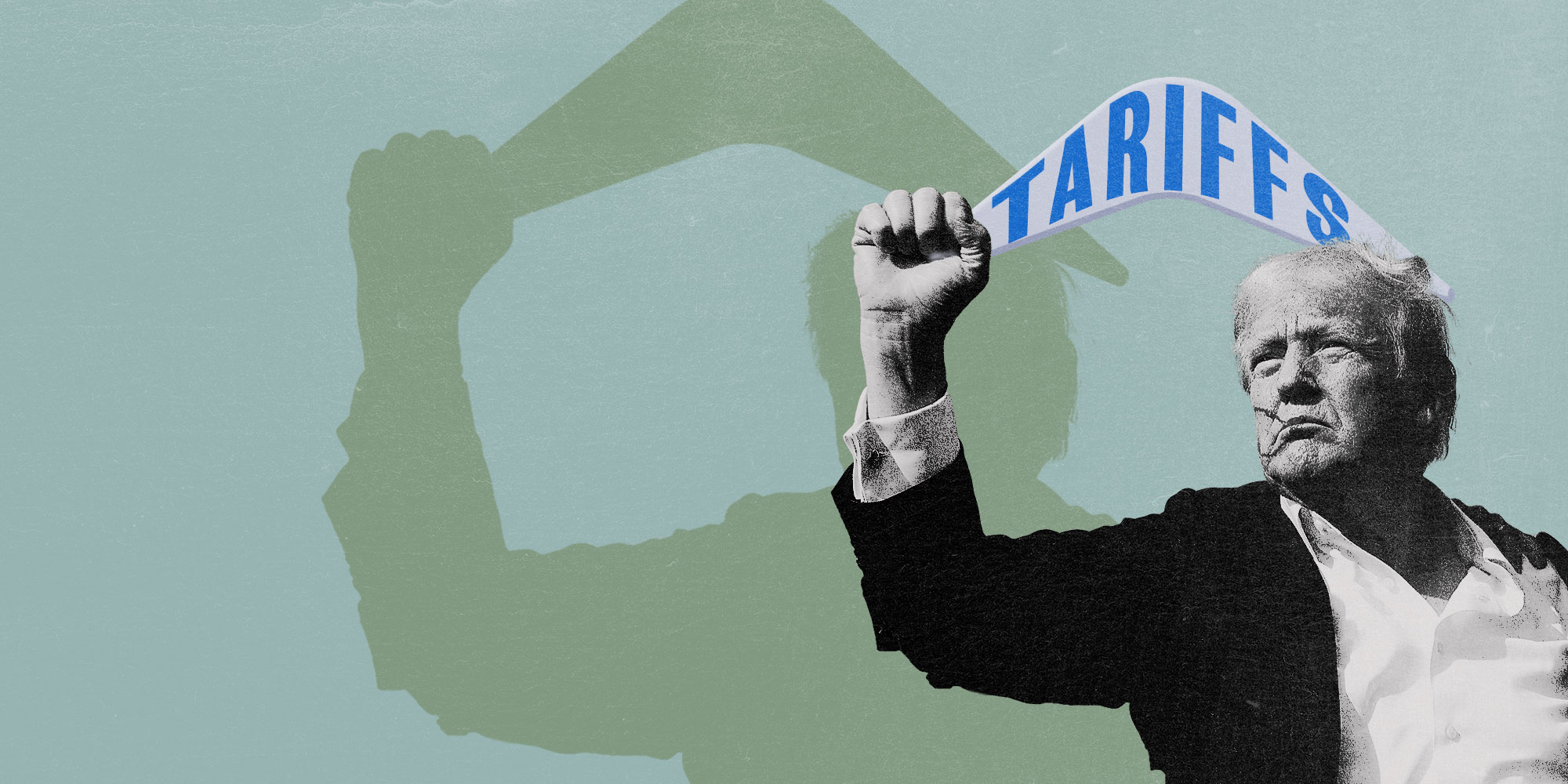US President Donald Trump delivered his quasi State of the Union speech last night, giving an unapologetic address to a joint session of Congress after his whirlwind early weeks back in the White House.
A keystone of the speech was the imposition of sweeping tariffs on a host of countries, particularly Mexico, Canada and China, which threaten to disrupt entire industries.
The decision abruptly reverses America’s decades-long project of expanding free trade with its allies, especially in North America. “The tariffs have the potential to profoundly reshape relations between the US and its two largest trading partners,” the Wall Street Journal reported.
Let’s just go back to school a bit on tariffs. Tariffs are bad. This is like economics 101. The debate over the issue was settled two centuries ago. So why is Trump going there, and will it turn out badly once again?
Tariffs are bad because they function as a tax on imports, increasing the cost of foreign goods. This often leads to higher prices for consumers, reduces their purchasing power and increases costs for businesses that rely on imported materials for inputs.
But it doesn’t end there; they often spark retaliatory action. Tariffs result in inefficiency and resource misallocation, and distort comparative advantage, a principle that suggests countries should specialise in industries where they have the lowest opportunity cost. Protectionist policies prevent efficient allocation of resources, leading to lower productivity and economic stagnation. The whole bang-shoot results in reduced economic growth and investment uncertainty.
And yet some countries have used tariffs effectively to nurture industries, and some countries have had – for years – enormously high tariffs, like India, and yet have managed to grow at very high rates. Trump’s decision to invoke tariffs is, from an economic perspective, cretinous and harmful. But from an academic point of view, it also constitutes a grand experiment. How that will turn out is not exactly clear.
What is the situation globally? What are the average tariff rates applied on a weighted-mean basis to all products by country? It just so happens we have an answer to this because the World Bank compiles something called the World Integrated Trade Solution system based on the United Nations Conference on Trade and Development’s Trade Analysis and Information System (Trains) database and global imports data from the United Nations Statistics Division’s Comtrade database. (Takes audible breath after all that.)
The result looks like this:
 What you see is that as a proportion of total trade, most countries fall within the 2.5% to 5% bracket, which is pretty small, really. The modesty of the total tariff trade is really a tribute to years of work done by international organisations, but also the overwhelming logic of free trade. The country-by-country breakdown of selected economies looks like this:
What you see is that as a proportion of total trade, most countries fall within the 2.5% to 5% bracket, which is pretty small, really. The modesty of the total tariff trade is really a tribute to years of work done by international organisations, but also the overwhelming logic of free trade. The country-by-country breakdown of selected economies looks like this:
 It’s apparent that before Trump’s announcement, the developed world is leading by example, which perhaps also suggests why it is the developed world. Developing economies typically have higher tariff levels – why is that?
It’s apparent that before Trump’s announcement, the developed world is leading by example, which perhaps also suggests why it is the developed world. Developing economies typically have higher tariff levels – why is that?
For a lot of reasons, including the desire to protect infant industries; to generate revenue because in developing countries, tax evasion is typically high; because of scarce foreign exchange reserves; to protect jobs; and effect import substitution policies.
But the charts above also illustrate how dramatic a 25% tariff increase would be on the US’s biggest trading partners. The current estimate is that the tariffs will reduce US GDP growth by at least 1%, but economists are arguing it could get worse.
The problem is stagflation: this is where you have weak growth and higher inflation. At the moment, US inflation is just 3%, which is higher than the Federal Reserve’s target rate of 2%, so if there were ideas about a decrease in interest rates, they have just disappeared in a puff, not just in the US, but here in SA too because these events have international repercussions.
So why is Trump doing it? Basically, I think because the way to avoid the effects of tariffs is typically to manufacture locally, and large economies are very attractive investment opportunities. My guess is that Trump feels higher tariffs will be offset by increased domestic investment.
I think his transactional nature is offended by the US “getting screwed” by countries with higher average tariff rates than the US. But I also think he painted himself into a corner promising tariff increases on the campaign trail and risked seeming irresolute if he did not keep that promise.
The fact is that politicians everywhere – not only Trump – love tariffs because they are then seen as “doing something”, and “protecting jobs”, and all those good things.
You can see how this backfires since South Africa’s attempt to change the local steel market by promoting mini-mills has just resulted in the closure of ArcellorMittal’s long-steel product mills here. SA has hundreds of tariffs on products that are not produced locally, so we are really not in a position to point fingers.
Trump said in his speech: “There will be a little disturbance. We’re okay with that.” I just don’t think that’s true: the disturbance won’t be little and Americans won’t be okay with it. We will see. DM
Business Maverick
After the Bell: Trump’s tariff war is pointless, useless, harmful, and will backfire





